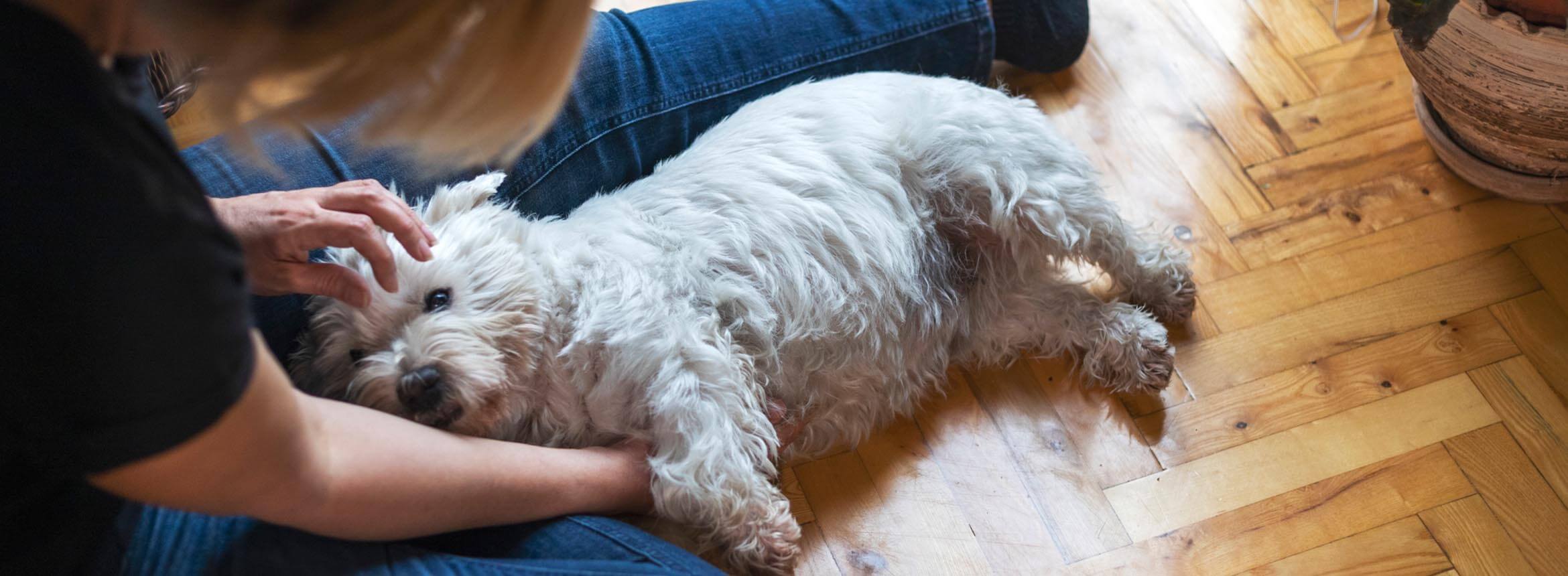“Living without your pet may seem unthinkable, but sometimes euthanasia is a necessary decision to relieve a pet’s suffering. When our pets don’t have any options remaining for treatments or ways to ease pain, euthanasia can be the most humane course of action. Your veterinarian can help guide you through the decision-making process to ensure you keep the best interest of your pet in mind.”
— Dr. Vickie Carmella, Director of Veterinary Scientific Affairs, Blue Buffalo
Talk to your vet and make plans.
As a first step, discuss the decision to euthanize your pet with your vet and ask any questions that come to mind about the process. You should also discuss where you want the procedure to take place. Usually, the procedure is done at the vet’s office, but many Pet Parents choose to have the procedure done at home, where their pet will be the most comfortable. If your vet doesn’t offer that option, you may elect to find a vet who does.
Prepare the family.
If you have children, be sure to discuss what will happen to their pet in plain, age-appropriate terms. Though you may — understandably — want to use terms like “putting to sleep,” this can be confusing to very young children, as they may think eventually their pet will wake up. Having the whole family understand and discuss the decision can help with the grieving process.
Decide how to memorialize your pet.
Determine ahead of time how you would like to honor your pet’s remains. If you would prefer a burial, research a local pet cemetery in your city or town, and find a company that can assist you with the preparations. If you would prefer to bury your pet at home, just be sure that your city or town will allow you to do so.
Cremation is another option that many Pet Parents opt for; research a credible company that can perform the cremation. These companies often offer choices of urns or decorative boxes for your pet’s ashes, but you can also choose to find your own vessel online.
The day of: What to expect.
It is a smart idea to settle payment before the procedure so you won’t have to deal with logistics while your grief is still fresh.
During the procedure, your vet may administer a sedative to your pet to ensure that he or she is as calm and relaxed as possible. Next, your vet will give your pet a euthanasia injection designed to shut down brain and heart functions quickly and painlessly. You may see your pet twitch, urinate, or defecate after he or she has passed — this may be hard to watch, but it is a normal reaction as your pet’s muscles relax.
You may choose to be with your pet to comfort and hold him or her while your vet administers the medicine. Afterward, you can stay with your pet to say goodbye.
Give yourself and your family time to grieve.
It is never easy to lose a cherished pet. Make sure to give yourself and your family plenty of time to grieve the loss. If you or your family need help with the grieving process, your vet can connect you with a pet loss support group; some vets even offer them as part of their practice.
Above all, it can help to know that you made the best decision to ease your pet’s suffering. And in time remembering your special years together will elicit smiles instead of tears.



